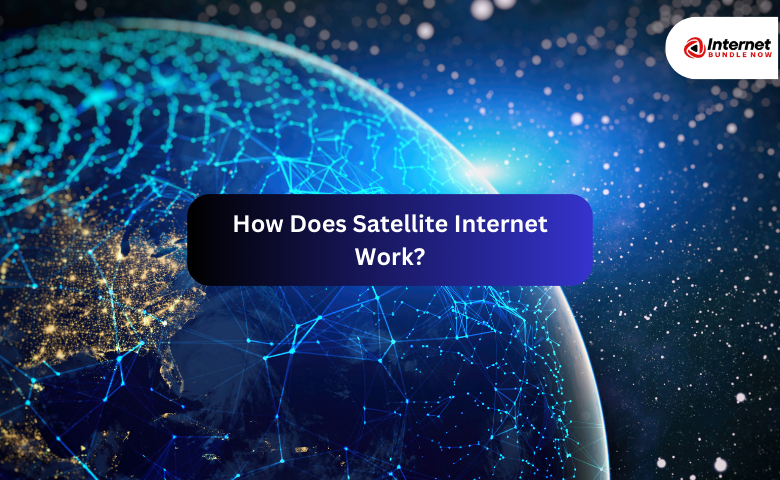- TV
How to Get Premium Channels with Your Cable TV Bundle?
Access to exclusive entertainment content is a priority for many viewers seeking a richer television experience. Premium chan...
Explore More
Satellite internet provides a valuable solution to those in remote or rural areas where traditional broadband options are unavailable. At Internet Bundle Now, we are committed to providing reliable satellite Internet Service Provider. But how exactly does satellite internet work? In this article, we’ll explore the science behind it, its components, benefits, and limitations.
Satellite internet is a high-speed connection that transmits data through satellite dishes instead of the typical terrestrial cables or fiber optics. This method allows people in rural or underserved areas to access the internet where other types of broadband might not be available. As Satellite Internet Providers continue to evolve, satellite connections are becoming faster, more reliable, and more accessible. Whether for work, entertainment, or communication, satellite internet can make a significant impact in regions that lack other infrastructure.
Satellite internet relies on the transmission of data between Earth-based ground stations and satellites orbiting high above. There are two primary types of satellites used for internet connectivity: geostationary satellites and low-Earth orbit satellites.
Both types of satellites play critical roles in delivering internet connectivity to users across vast distances.
There are several key components involved in the satellite internet connection process:
All these components work together to establish a seamless connection for your internet needs.
When you access the internet through a satellite connection, the process involves multiple stages. First, your device sends a request for data, which is relayed to the satellite via your satellite dish. The satellite then transmits this request to a ground station. From there, the information is fetched from the internet and sent back to the satellite, which transmits it back down to your dish. This process allows you to access websites, stream content, and connect with others.
However, this system requires that signals travel significant distances, leading to a delay known as latency. The longer the distance the signal has to travel, the more latency you experience, which can affect your internet speed.
Like any service, satellite internet has both advantages and drawbacks.
Advantages:
Disadvantages:
Despite these drawbacks, Satellite Internet Providers are constantly improving their technologies to offer better speeds and reliability.
Latency is a critical factor for satellite internet, as the signal has to travel to and from the satellite in orbit, causing delays. Geostationary satellites can cause significant latency, which affects online activities such as gaming, video conferencing, or real-time streaming. However, with the advancement of low-Earth orbit satellites, latency has been reduced considerably. Providers like Starlink are showing how these new satellites can provide better speed and lower latency, making satellite internet a more viable solution for a broader range of activities.
One of the key challenges with satellite internet is its sensitivity to weather conditions. Storms, heavy rain, snow, and even thick cloud cover can interfere with the satellite signal. When a satellite’s signal is obstructed by weather patterns, users may experience slower speeds or complete service interruptions. To minimize the impact, some providers offer weather-resistant equipment, and engineers continue to refine satellite technology to reduce weather-related disruptions.
There are several Satellite Internet Providers in the market today, each offering unique services tailored to different needs. Notable providers include:
When choosing a provider, it’s essential to consider your location, internet usage needs, and budget. Comparing the different plans and speeds is key to selecting the best service for your needs.
The cost of satellite internet varies depending on several factors:
Overall, satellite internet tends to be more expensive than other broadband options, but it’s often the only viable solution for those in rural areas.
The future of satellite internet looks promising, especially with the development of low-Earth orbit satellites. With companies like Starlink launching thousands of satellites, we can expect to see lower latency, faster speeds, and greater reliability in the coming years. These advancements could make satellite internet a more competitive option compared to other forms of broadband. As technology evolves, satellite internet may become an even more affordable and effective way to connect globally, especially in underserved regions.
Latest insights, tips, and updates from our experts.
George
How Does Satellite Internet Work?